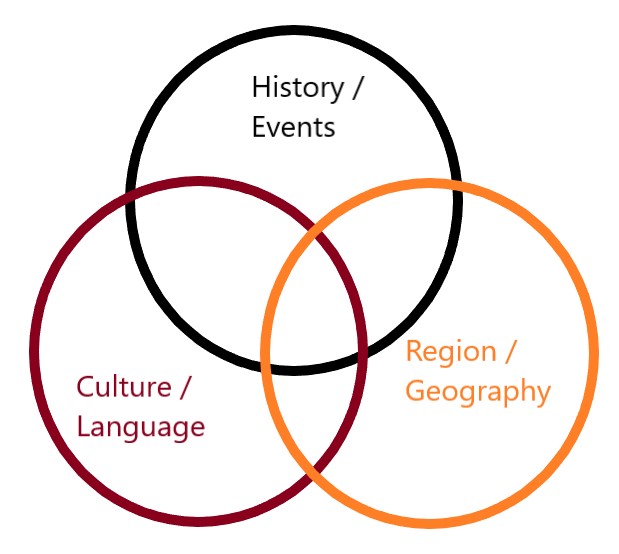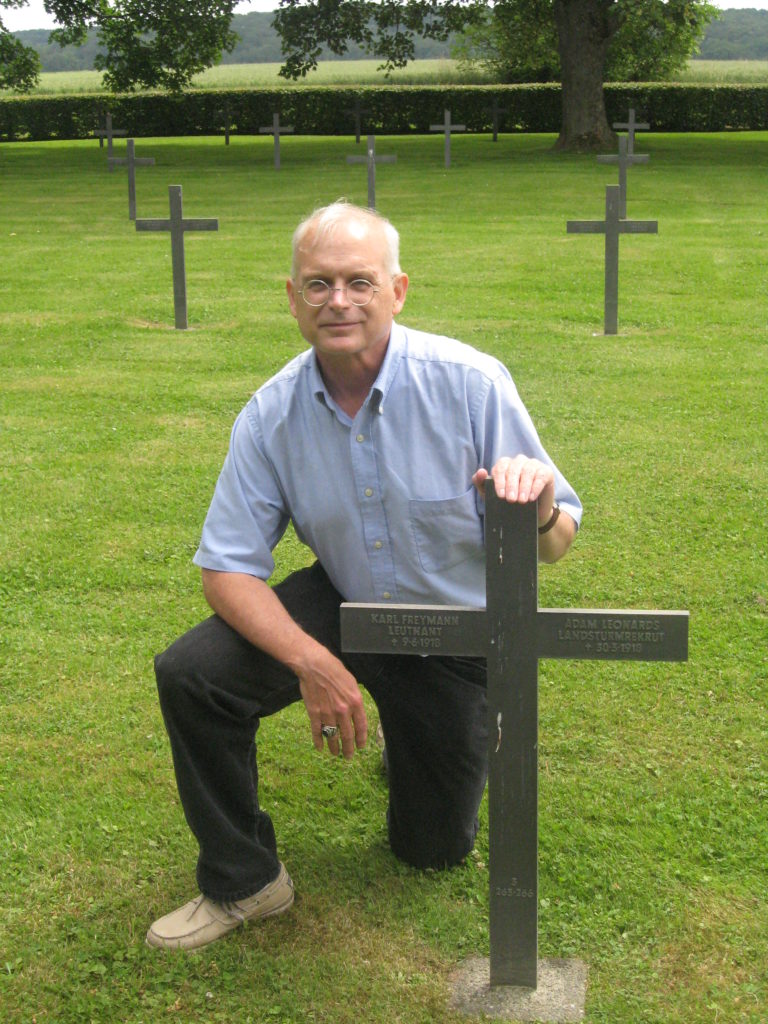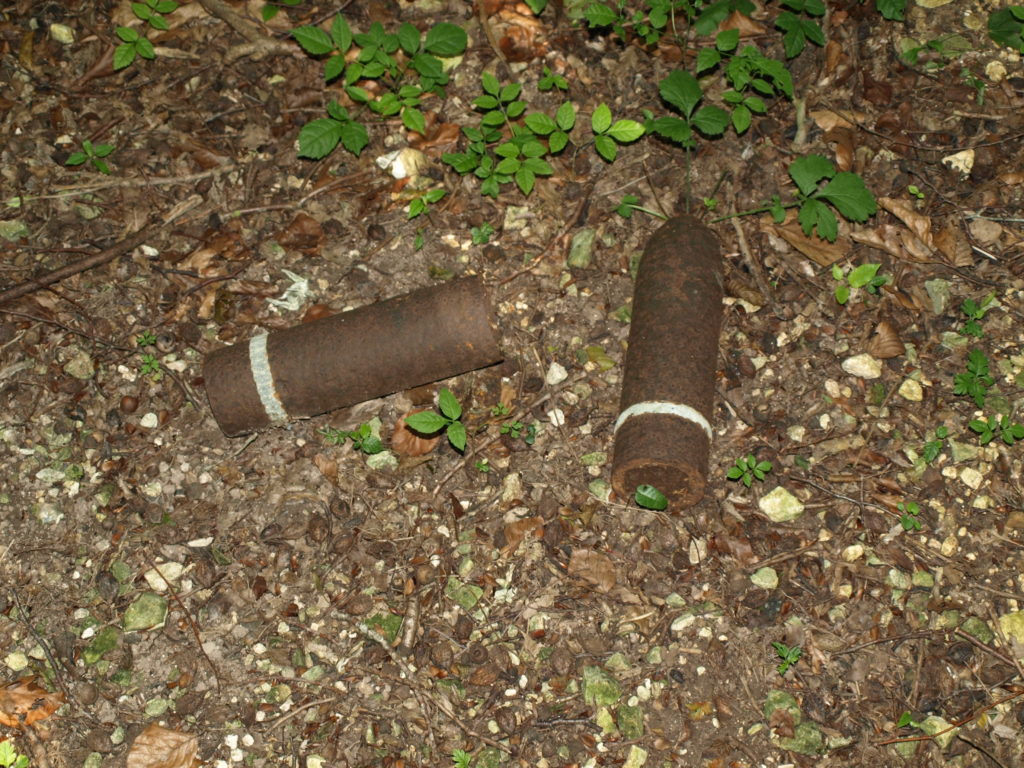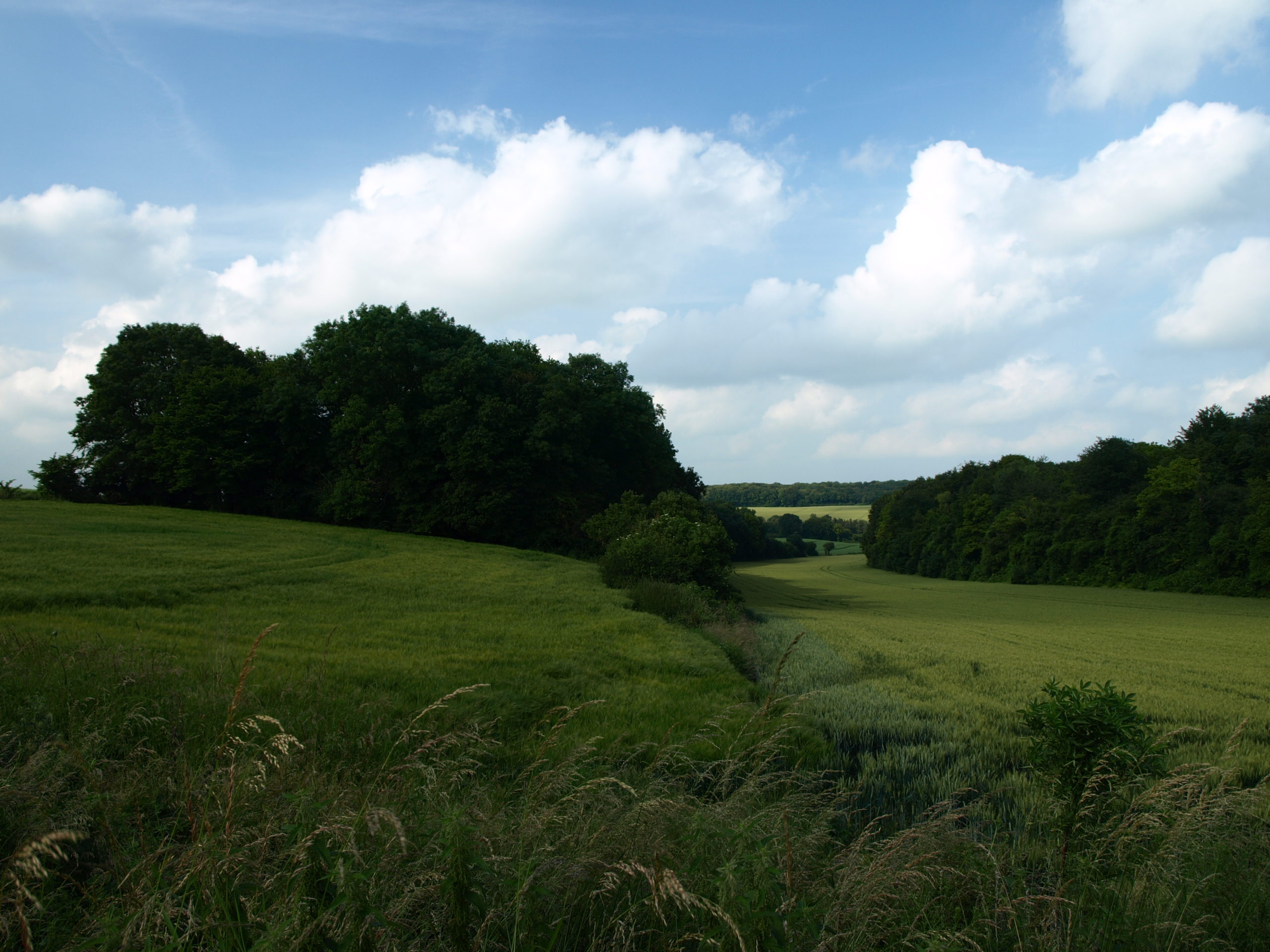Planning a successful battlefield tour requires several skill sets including knowledge of the history and events of the battle, knowledge of the local language and culture, and knowledge of the local area. The plethora of books and internet sources available today make it easier than ever to plan a trip alone; but there are still times when it makes more sense to hire a private guide or to join a tour. Let’s look at a few real-life examples from my years of battlefield guiding.
Knowledge of History and Events
One of my favorite battlefield walks in the Meuse-Argonne is Le Chêne Tondu, a plateau in the Argonne Forest situated southwest of Apremont-en-Argonne. Most tourists know it only for the Deutscher Soldatenfriedhof Apremont situated along the D442 that they visit on their way to the Lost Battalion’s Pocket. However, this plateau also has a witness tree containing war-time insulators, a German signals bunker, foxholes and mg pits where troops of the 28th Division clashed with the Germans and the remains of a German military camp across the road. If the planner doesn’t know this, these sites are never visited.
In order to fully understand what happened on Le Chêne Tondu in October 1918, the visitor also needs to understand the significance that Hunter Liggett’s oblique attack into the Argonne Forest by portions of the 82nd and 28th Divisions had on the Lost Battalion and the Pennsylvania troops trying to take the plateau. (Hint: It wasn’t just brute Doughboy force that caused the Germans to pull back northward in the Argonne Forest.) Because of their deep knowledge of battles, units and leaders, tour guides can often connect the dots and explain relationships that visitors with a limited knowledge of military history might miss.
Culture and Language
In the end, a vacation (or pilgrimage) is supposed to be an enjoyable and meaningful experience for all. Therefore, in preparing to visit the battlefields, I strongly recommend that people learn a little local language and culture. Visitors don’t have to become fluent but learning a few key phrases and polite actions will make one more comfortable in the foreign setting; especially if plans don’t work out as anticipated.
For example: Finding gasoline or food on a Sunday in France can be challenging, because almost everything is closed. On one Sunday afternoon in Château-Thierry I drove a diabetic client to McDo (McDonald’s) because that was the only food alternative open before dinner.
How can one get gas, if the 24/7 pump in a rural gas station does not accept one’s credit card?
Where should one go if one gets sick? In most European countries pharmacists can write prescriptions and this could save you unwanted and lengthy delays for doctor visits.
Finding restrooms in rural France can be a challenge because stores do not offer public restrooms unless they serve food. At cafes, bars and restaurants one does not just go in and use the restroom. It is expected that one will sit down and order at least a drink before heading off to the WC.
Driving overseas could take up an entire article by itself. It can be learned, but it can also be stressful—especially in the first few days of a trip. My general comment is that the roads in most European countries are narrower and windier than in the U.S. Therefore, a driver needs to have a very good feel for where his/her car is on the road. If you do not possess this sense and quick reflexes, you probably should not drive overseas.
A private guide or a tour leader can help explain cultural differences and overcome language shortfalls, providing you a more enjoyable experience.
Region and Geography
Understanding the assortment of local restaurants, lodging alternatives, food stores, bakeries, etc. in a region are all ways that a knowledgeable tour guide can add value to your tour. Where can one do laundry? Where can one fill the gas tank? What cultural highlights (non-military) are available for those who are not military history fanatics? What local cuisine specialties make meaningful take-home gifts?
Size also matters: The Meuse-Argonne Offensive was fought along a 20-mile-wide front, so it is relatively compact, and a wrong turn generally does not have major consequences. The Ardennes Offensive, on the other hand, was fought over a much larger area. Therefore, it becomes very important to plan one’s route efficiently. In either setting, one can spend hours on unknown roads searching for a specific location.
Summing it all up
As readers consider alternatives, they should accurately assess their knowledge base in each of these three areas and the time and energy available to make up their deficiencies. I find the Venn diagram below useful in this analysis. Essentially, you want to have an experience where all three circles overlap.

The benefits of hiring a private tour guide is well illustrated in this example: A friend knew that his great uncle served in the (Imperial German) Infanterie-Regiment Nr. 87 and that he was buried in France. He wanted to retrace his great uncle’s footsteps; but he had no knowledge of traveling in France. Thus, he turned to me for assistance. My first step was to obtain a copy of the German regimental history—all 400+ pages—from Markus Klauer. This was followed by a search of the German War Graves Association database to identify the burial location and date of death. Cross referencing the German regimental history with Alistar Horne’s “The Price of Glory” revealed that IR87 played a key role in the initial assault on Verdun. Vacation time and budgets were worked out; and it was determined to spend two days retracing the regiment’s fighting at Verdun in early 1916 and one day to visit the cemetery and front line around the time of his death in June 1918. IGN Series Bleu (1:25,000 scale) maps were purchased for both regions.

This was an extremely successful trip, where years of experience, determination and luck all came together. The experience was in the form of the guide (me) understanding and appreciating the information in the German regimental history—including the detailed maps. The determination was in the form of driving down a narrow, dirt farm lane in a rental car to get to the German front line position and walking through about 30 meters of crops to enter a wooded ravine where there had once been a headquarters. The luck was in the form of finding the ravine largely undisturbed; complete with shell holes and a few unexploded shells that the farmer removed from his field. If my friend had done this on his own, it is doubtful that he would have experienced more than the key Verdun tourist sites and a quick visit to the cemetery where his uncle was buried.

Bon voyage! For those wanting to venture on their own, further information and tips can be found on my https://meuse-argonne.com website. Specifically, there is an article, “Planning the Best Battlefield Pilgrimage Ever… (Hopefully), and the “La Vie en France” blog posts cover a wide range of cultural items. For those who would like to consider hiring a private guide or joining one of our tours, I am just an email away: kneedeepintohistory@gmail.com. At Knee Deep Into History LLC we really do strive to get you out into the field, to present both sides of the story and to bridge cultures!
#kneedeepintohistory #kdih #meuse-argonne #battlefieldtours #ww1tours #ww2tours

Leave a Reply